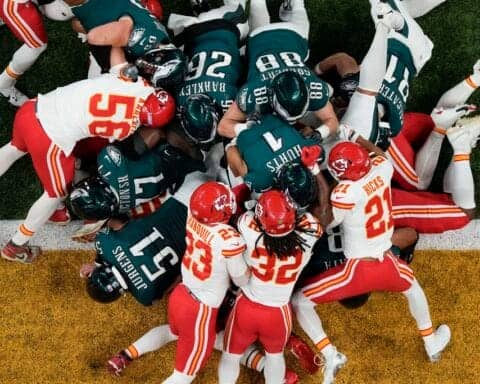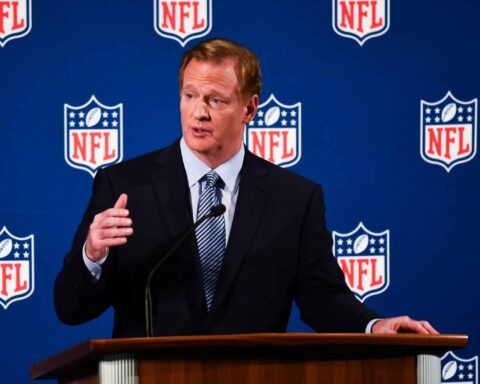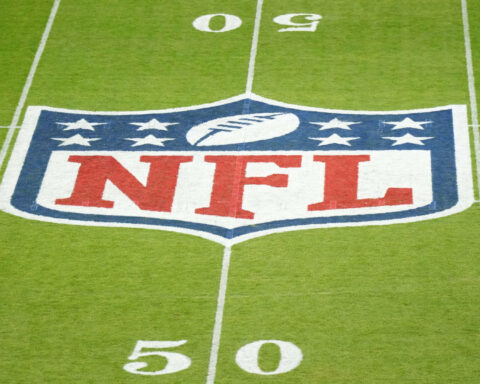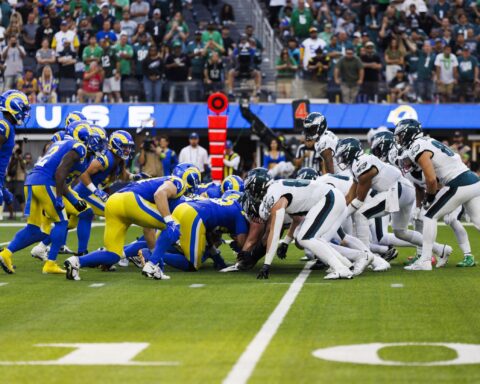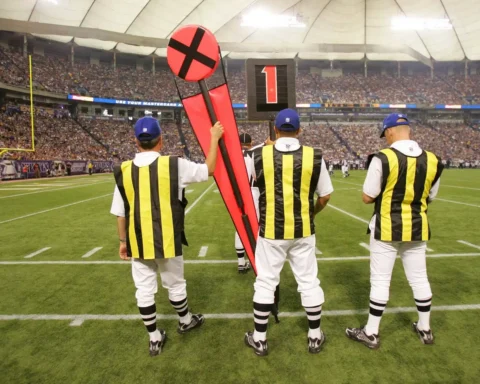Last night’s Hall of Fame preseason game marked the first appearance of the league’s new kickoff rules.
The NFL adopted the kickoff format championed in recent years by the spring football leagues. They’ve even tweaked the onside kick rules too.
Thursday night’s game was halted late in the third quarter due to thunderstorms in the Canton, Ohio area. Still, the Chicago Bears and Houston Texans managed to squeeze in eight kickoffs in the Bears’ 21-17 victory.
It’s early in the experiment, and one game is a terribly small sample to work with, but the jury is likely still out on how teams will adjust to the new format.
The Changes
Last year, roughly 77% of kickoffs resulted in a touchback and the offense getting the ball at the 25.
Wanting to get kickoff returns back into the game was a priority. The problem is, the league also wants to cut down on injuries. And kickoff returns were producing injuries.
So now the kicker stands alone with the football on the 35-yard line.
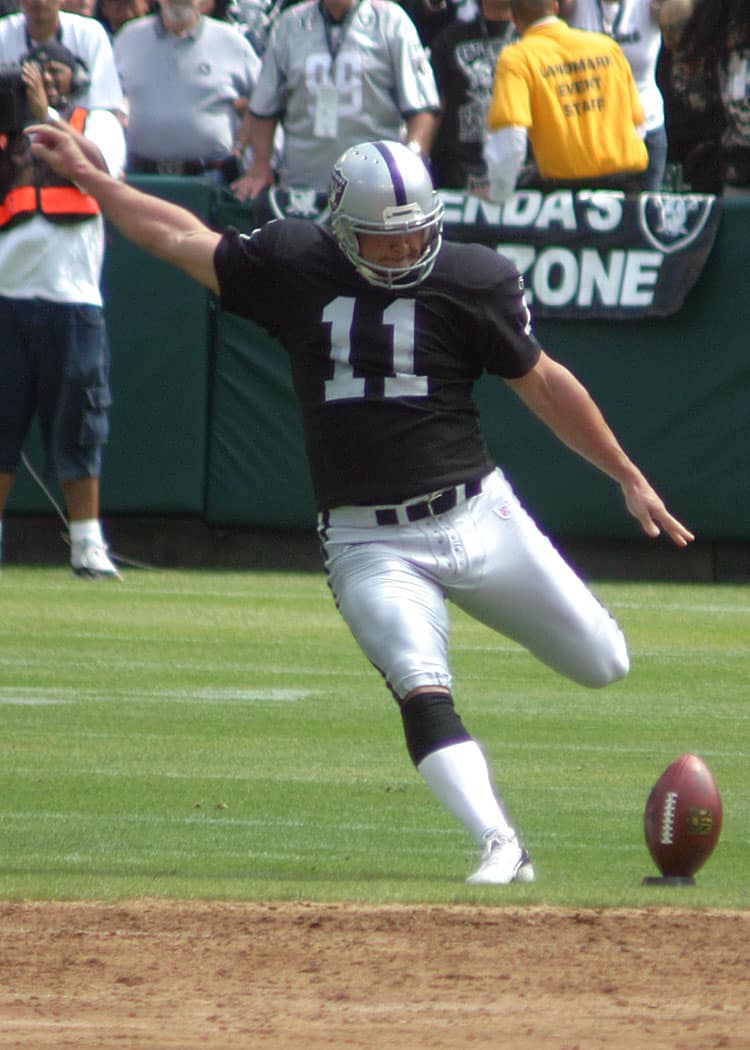
He must land the ball somewhere between the opposing goal line and the 20-yard line. The rest of his team lines up on the other side of midfield, at the 40.
Anywhere between five-to-10-yards away, the opposing team’s players line up with one or two returners standing back in the landing zone.
No one can move until the kick either hits the ground or is caught by the returner.
If the returner plays the ball, the opposing players come together, with at most a 10-yard start from each other. In the past, greater distances were involved. That allowed players to gain more speed, leading to higher-impact collisions and injuries.
If the ball does land in the landing zone, and is downed in the end zone, then it is placed at the 20. But if the ball lands short of the landing zone, the ball is placed at the 40.
A kickoff that lands in the end zone and is either downed or goes out the back, results in a touchback and the ball is placed at the 35.

A New Onside Kick
The onside kick is now outlawed until the final quarter. Also, only the trailing team may attempt one. This after indicating their intention and allowing both teams to line up under the old rules.
The loss of the element of surprise throughout the game is one of the biggest arguments against this change.
Think back to Super Bowl XLIV. The Saints, trailing 10-6 at halftime, were to kick off to the Colts to open the second half. Instead, they called an onside kick and recovered it.
This led to a touchdown that changed the momentum of the game and led to the Saints’ championship. That strategy no longer exists in the NFL.
Indeterminable Debut
Again, one game isn’t much of a sample to draw from.
There was one lone touchback out of the eight kickoffs. As the game never reached the fourth quarter, there wasn’t an onside kick attempted.
The longest return of the game was 31 yards, giving the Bears the ball at their own 32 to begin the third quarter.
Not much of a difference from starting at the 25. Most of the kickoff returns ended up near the 25, give or take a couple of yards.
The good sign was what was missing–a yellow flag on the field for an illegal block in the back. Not one of those was called in Thursday’s game.
But there were two flags, both for players moving before they were supposed to. Those are to be expected until players fully adjust.

Impact On Cowboys
Dallas’ kicker, Brandon Aubrey, had just under 91% of his kickoffs result in a touchback. His length is — or was in kickoffs — his strength. Aubrey may not be so thrilled with the new rules.
KaVontae Turpin is likely licking his chops for the Cowboys’ Aug. 11th game against the Rams in Los Angeles. Assuming John Fassel is putting in the work, Turpin should be presented with enough opportunities to break off a huge return.
As with all the other 31 teams, those special teams units that adjust best will have a huge impact on their respective team’s fortunes.
Those that don’t are in for a long year.
Either way, it should be interesting to see how it all plays out.



